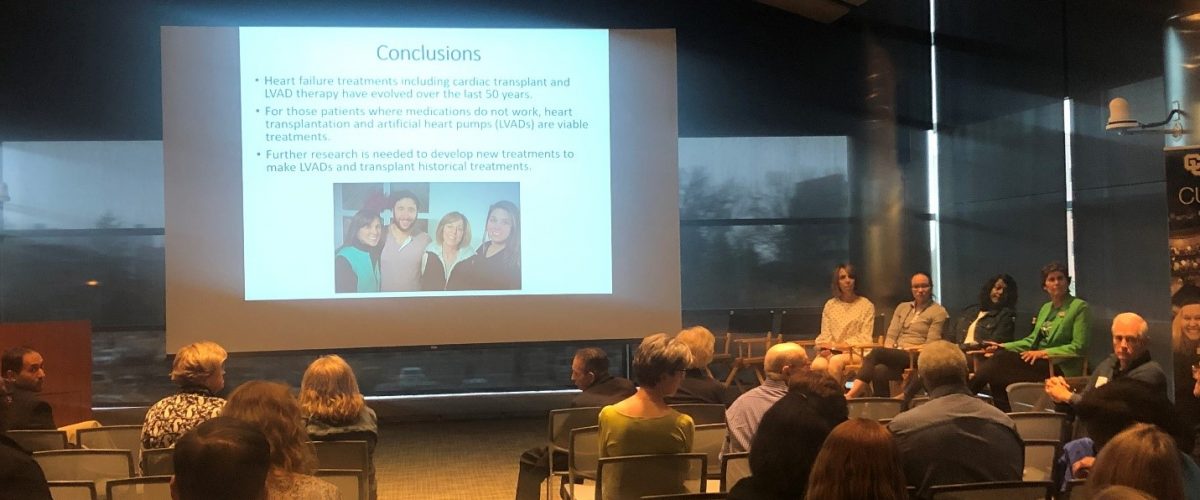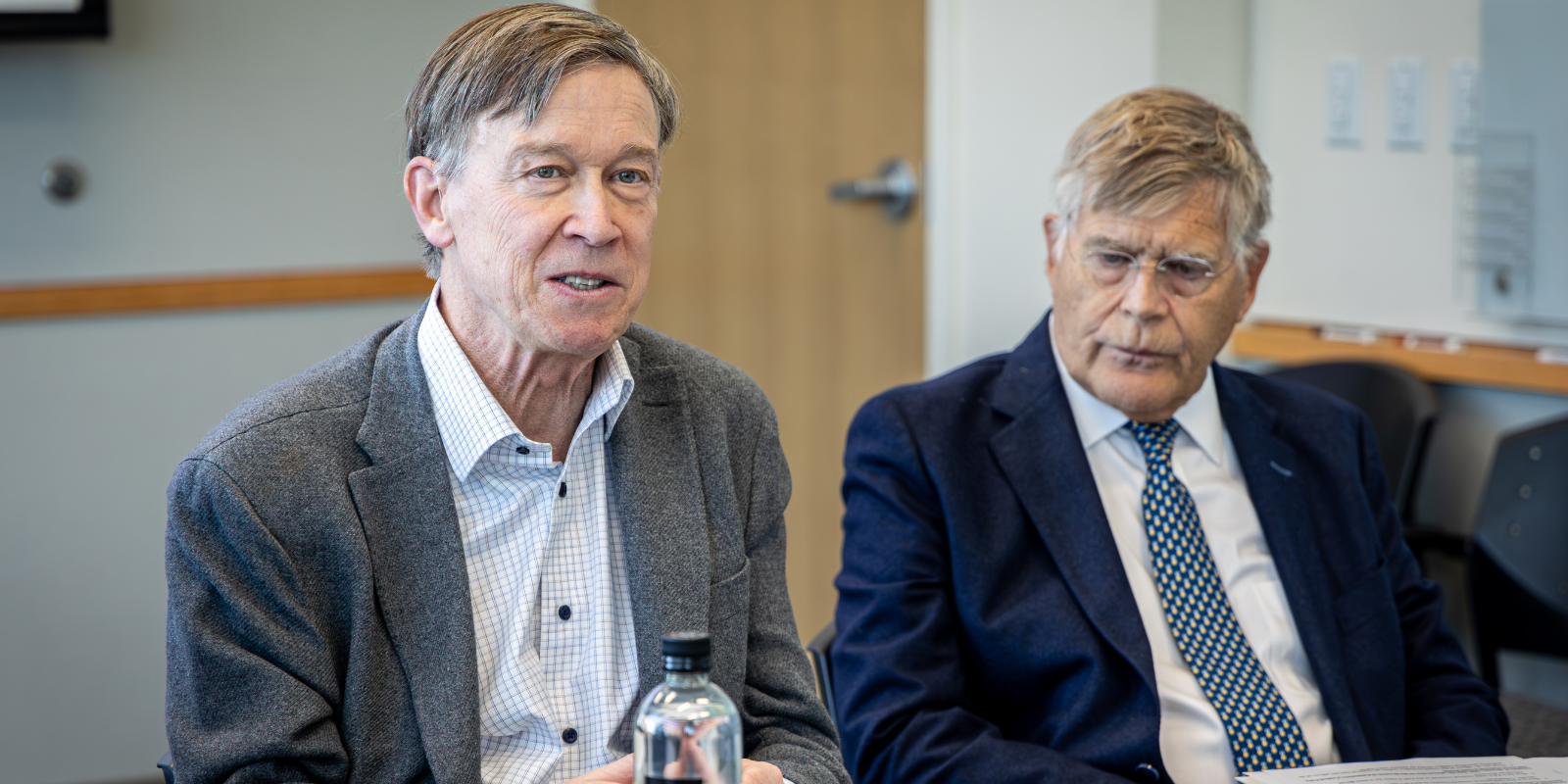Did you know the CU Anschutz Medical Campus has the longest-running transplant program in the country? It has literally given life to thousands of patients, trained generations of surgeons and brought new and innovative techniques and therapies to clinical use.
Chancellor Don Elliman kicked off the second of the 2019 Transforming Health Care lecture series, “Giving Life and Health: The Impact of Altruism on Colorado’s Organ Transplant Community.” About 80 people attended the session in Krugman Conference Hall on May 7. Guests heard from renowned doctors and panelists, including Richard Schulick, MD, director of the CU Cancer Center, Elizabeth Pomfret, MD, PhD, chief of transplant surgery, and Amrut Ambardekar, MD, director of cardiac transplantation, Department of Medicine.
First-ever liver transplant
Dr. Schulick began with highlighting the history of transplantation. In fact, the first liver transplantation took place at the University of Colorado in 1963 by Dr. Tom Starzl.
Dr. Pomfret provided facts about liver and kidney transplantation. There are nearly 94,845 patients on the kidney transplant waiting list and the survival rate for transplant patients is higher with a living donor rather than a deceased donor. Pomfret then introduced the inspiring Molly Conneen, who altruistically donated her kidney to a stranger in need. Conneen’s decision to donate her kidney sparked a chain that involved five different centers across four states.
“If I can live with just one kidney, why wouldn’t I share my spare with someone else to improve their quality of life?” Conneen said. “If my one kidney could set off a series of donations across the country, that is the best return on investment I could make.”
‘Someone was at an even higher risk of dying’
Dr. Pomfret then introduced two women, Judi Altman, who needed a liver transplant, and Carissa Vinovskis, an employee at Children’s Hospital Colorado, who donated the right lobe of her liver to Altman, who she did not know before the surgery. Altman was so grateful “to know that someone so young and someone willing to sacrifice her life for me really took me by surprise.”
Vinovskis never hesitated. “Whereas there was a risk for me to go through that surgery, I knew that somebody, somewhere in the world was at an even higher risk of dying than I was, and he or she needed a liver, and I had one.”
Vinovskis even joked, “I would do it again in a heartbeat, but it’s a one-and-done thing, or so I’m told!”
A new heart
Amrut Ambardekar, MD, discussed heart transplantation and the huge supply-demand mismatch. He introduced an extraordinary woman, Christine Befort, who was a healthy middle-aged woman who suffered a heart attack from a rare coronary dissection, which is caused by a tear in the artery that created a large clot formation. She underwent emergency bypass surgery and was transferred to University of Colorado Hospital where she received a left ventricular assist device, which is an artificial heart pump, while she awaited a heart transplant.
She finally received a phone call in the middle of the night announcing that they had a heart transplant for her. Recovery was successful and she was able to go back to her normal life. Befort “gives all the gratitude and all the good wishes back to the university” because everyone she worked with was “outstanding.” She even donated her own heart to the Colorado Center for Personalized Medicine’s Biobank for research purposes.
It’s easy to see the generosity of Coloradans, after hearing from so many inspiring examples of altruistic organ donation.



